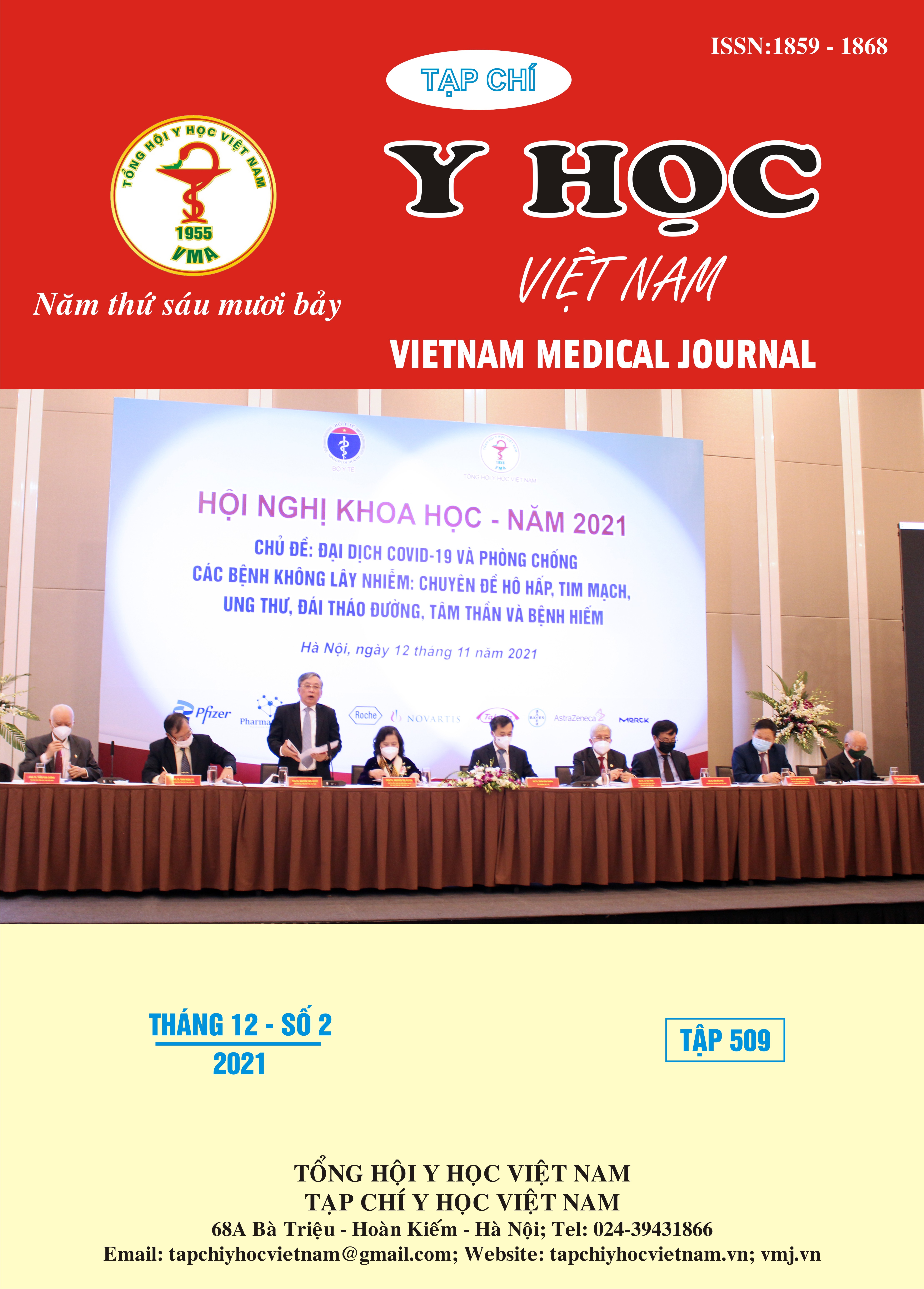RELATIONSHIP BETWEEN ANKLE-BRACHIAL INDEX, PULSE WAVE VELOCITY WITH CORONARY ARTERY LESION SEVERITY ASSESSED BY SYNTAX II SCORE IN PATIENTS WITH ACUTE MYOCARDIAL INFARCTION
Main Article Content
Abstract
Objectives: research about relationship between Ankle-Brachial Index, Brachial-Ankle Pulse Wave Velocity and coronary artery disease severrity assessed in patients with acute myocardial infarction. Subjects and methods: This cross-sectional registry study was done at 103 military hospital Cardiovascular Center in patients with acute myocardial infarction and controls from November 2020 to April 2021. Results: 93 subjects including 60 patients with AMI (mean age 67,05 ± 12,04) and 33 without CAD (mean age 67,67±6,80) were enrolled in the study. Patients with AMI had significantly higher PWV and lower ABI as compared to controls (15,90±1,49 vs 13,32±1,98; p<0,01), (1,04±0,10 vs 1,12±0,13; p<0,01). The ABI ≥0.9 did not show any correlation with the number of branches and the degree of coronary artery injury. PWV was associated with number of diseased coronary artery (15,25±1,09 so với 16,22±1,57). There were strong correlations between PWV and SYNTAX score((r=0,477; p<0,01). Conclusion: This study provided the frank direct evidence in a cross-sectional investigation that PWV is associated with the extent of coronary artery disease.
Article Details
Keywords
Acute Myocardial Infarction, Pulse Wave Velocity, SYNTAX II
References
2. Benjamin EJ., Blaha MJ., Chiuve SE., et al. (2017), "Heart disease and stroke statistics—2017 update: a report from the American Heart Association", circulation, 135(10), e146-e603.
3. Kristian Thygesen, Joseph S. Alpert, Allan S. Jaffe, et al. (2012), "Third Universal Definition of Myocardial Infarction", Circulation, 126, 2020–2035.
4. Kim HL., Kim SH. (2019), "Pulse wave velocity in atherosclerosis", Frontiers in cardiovascular medicine, 6, 41.
5. Myslinski W., Stanek A., Feldo M., et al. (2020), "Ankle-brachial index as the best predictor of first acute coronary syndrome in patients with treated systemic hypertension", BioMed Research International, 2020.
6. Koji Y., Tomiyama H., Ichihashi H., et al. (2004), "Comparison of ankle-brachial pressure index and pulse wave velocity as markers of the presence of coronary artery disease in subjects with a high risk of atherosclerotic cardiovascular disease", Am J Cardiol, 94(7), 868-72.
7. Alarhabi A.Y., et al. (2009), "Pulse Wave Velocity as a marker of severity of coronary artery disease" J Clin Hypertens (Greenwich): 17-21.
8. Linh Phan Đồng Bảo (2013), Nghiên cứu đặc điểm tổn thương mạch vành và vận tốc sóng mạch ở bệnh nhân tăng huyết áp nguyên phát có bệnh mạch vành;, Đại học y dược Huế, Bộ y tế.
9. Chung CM., Tseng Y., Lin YS., et al. (2015), "Association of brachial-ankle pulse wave velocity with atherosclerosis and presence of coronary artery disease in older patients", Clinical interventions in aging, 10, 1369.
10. Zhang F., Liu J., Huang W., et al. (2013), "Associations of SYNTAX score with serum homocysteine and brachial-ankle pulse wave velocity [J]", Journal of Chinese Practical Diagnosis and Therapy, 2.


